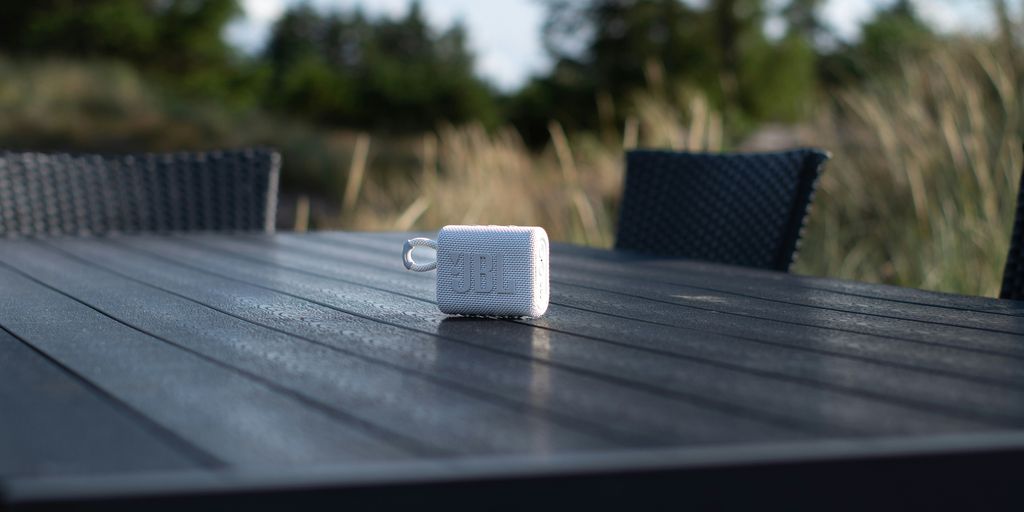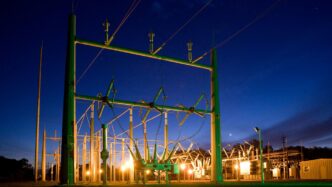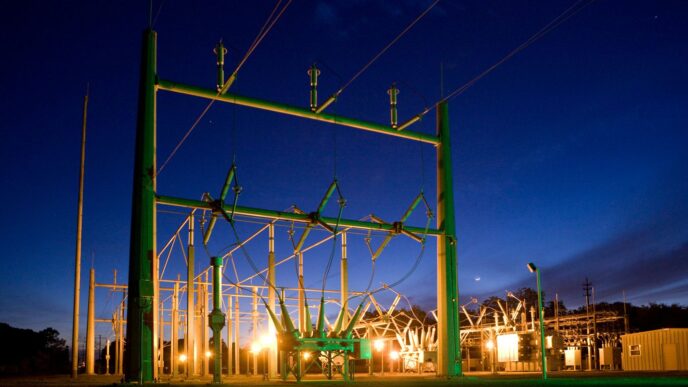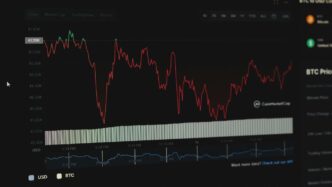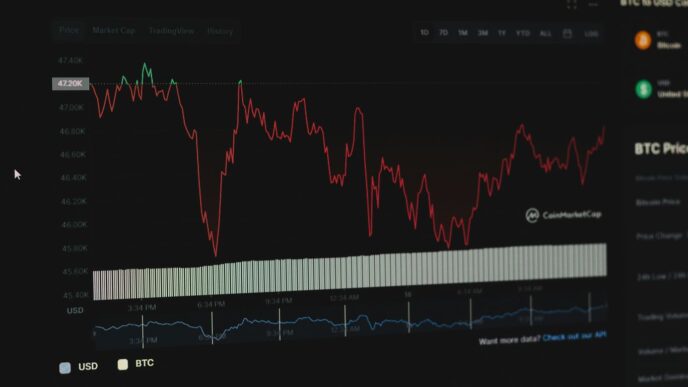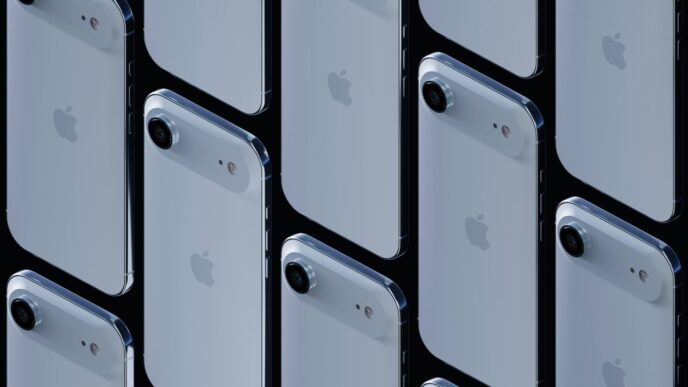So, you’re thinking about getting internet on the go, huh? The Starlink Mini has been making some noise lately, and for good reason. It’s supposed to be this super portable way to get online pretty much anywhere. This guide is all about helping you figure out if the Starlink Mini is the right fit for your adventures, whether you’re a digital nomad, an RV enthusiast, or just someone who needs reliable internet even when way out there. We’ll break down what it is, how it stacks up against the regular Starlink, and what you should think about before you buy one. Let’s get into it!
Key Takeaways
- The Starlink Mini is a small, portable version of Starlink’s satellite internet, made for people who need internet while traveling.
- It’s different from the standard Starlink kit because it’s much smaller, uses less power, and is designed for moving around.
- Choosing the Starlink Mini means you get internet pretty much anywhere, which is great for remote work or just staying connected in isolated spots.
- Before you buy, think about the cost, how you’ll power it, and if you’ll always have a clear view of the sky.
- Setting up the Starlink Mini is usually quick and easy, and you can expect decent speeds, though heavy weather might slow things down a bit.
Understanding Starlink Mini
What Is Starlink Mini?
Okay, so what is this Starlink Mini thing everyone’s talking about? Basically, it’s a smaller, more portable version of the regular Starlink satellite internet dish. Think of it as Starlink, but designed for people who are on the move. It’s meant to be easy to carry around and set up quickly, so you can get internet access pretty much anywhere. It’s an all-in-one deal, combining the dish and Wi-Fi router into a single unit. The idea is that you can just throw it in your backpack and take it with you. According to Starlink, the Mini uses about half the power of the standard dish, which is a big plus if you’re relying on batteries or solar power.
Key Features of Starlink Mini
So, what makes the Starlink Mini stand out? Here’s a quick rundown:
- Compact Size: It’s designed to be small and lightweight, making it easy to transport. We’re talking about something that can fit in a backpack without too much trouble.
- Integrated Router: The Mini has a built-in Wi-Fi router, so you don’t need to carry extra equipment. It boasts Wi-Fi 5 and an ethernet port for third-party routers and mesh.
- Low Power Consumption: Uses significantly less power than the standard Starlink dish, making it ideal for off-grid use or when you’re relying on battery power. This is a game changer for extended trips.
- Easy Setup: Starlink claims you can get online in minutes. Just plug it in, point it at the sky, and you should be good to go. The Starlink Mini install guide is pretty straightforward.
- Durability: It’s built to withstand various weather conditions, including snow, sleet, heavy rain, and strong winds. This is important if you plan on using it in remote or unpredictable environments.
Starlink Mini’s Portability Advantage
The biggest selling point of the Starlink Mini is, without a doubt, its portability. The standard Starlink dish is okay, but it’s not exactly something you’d want to lug around on a camping trip. The Mini changes that. It’s designed for people who need reliable internet access while traveling, camping, or living in remote areas. Imagine being able to work from anywhere, stream movies in your RV, or stay connected during emergencies, all thanks to a small, portable satellite dish. The portability advantage is huge, especially for digital nomads, RV enthusiasts, and anyone who spends a lot of time off the grid. The portable satellite internet is a game changer.
Starlink Mini Versus Standard Starlink
Size and Design Differences
Okay, so the most obvious difference? Size. The standard Starlink dish is, well, standard-sized. It’s meant to sit on your roof or somewhere relatively permanent. The Starlink Mini? Think of it as the dish’s smaller, more agile sibling. It’s designed to be portable, and that shows in its compact design.
To give you an idea:
- Standard Starlink: Bigger, heavier, less travel-friendly.
- Starlink Mini: Smaller, lighter, fits in a backpack (probably).
It’s not just about the dish itself, either. The standard kit comes with a separate router, while the Mini has the router built right in. This makes the Mini a single, self-contained unit, which is great if you’re always setting up in temporary locations.
Power Consumption Comparison
Power is another biggie. The standard Starlink setup can draw a fair amount of power, which isn’t a huge deal if you’re plugged into the grid. But if you’re trying to run it off a battery or generator? That’s where the Mini shines. It’s designed to be much more power-efficient.
Think of it this way:
- Standard Starlink: Needs more juice, best for stationary setups with reliable power.
- Starlink Mini: Sips power, perfect for off-grid adventures and battery-powered situations.
One of the coolest things about the Mini is its flexible power input. You can even power it directly from a 12-volt vehicle battery. That’s a game-changer for anyone who wants internet on the road.
Intended Use Cases
Ultimately, the biggest difference between the Starlink Mini and the standard Starlink is what they’re for. The standard version is your home internet solution. It’s designed to provide reliable, high-speed internet for everyday use. The Mini, on the other hand, is all about portability and flexibility.
Here’s the breakdown:
- Standard Starlink: Home internet, streaming movies, video calls, general web browsing.
- Starlink Mini: Camping, RV trips, remote work from anywhere, staying connected in emergencies.
- Basically, if you need internet wherever you go, the Mini is your best bet. If you need rock-solid internet at home, stick with the standard version. The Starlink Mini kit sacrifices some raw power compared with the residential system for the ultimate in transportability and quick deployment.
Benefits of Choosing Starlink Mini

Unmatched Connectivity On The Go
Let’s be real, the biggest win with the Starlink Mini is its portability. It’s all about staying connected, no matter where you are. Forget those dead zones you’re used to. Whether you’re hiking in the mountains or chilling by a remote lake, the Mini keeps you online. It’s a game-changer for anyone who values being able to work, stream, or just stay in touch while off the beaten path. It’s a much better option than other solutions because it’s specifically built for those uses.
Ideal for Digital Nomads and Travelers
If you’re a digital nomad or someone who loves to travel, the Starlink Mini is practically a must-have. Think about it: no more relying on spotty Wi-Fi at cafes or expensive international data plans. You can set up your office anywhere with a clear view of the sky. Plus, the Mini’s compact size means it won’s hog precious space in your backpack or campervan. It’s designed to handle 12-to-48-volt power input, meaning you can power it directly from a 12-volt vehicle battery without needing a converter.
Here’s why it’s perfect for the road:
- Work from anywhere: Reliable internet means you can meet deadlines and stay productive, no matter your location.
- Entertainment on demand: Stream movies, shows, and music without buffering.
- Stay connected: Keep in touch with family and friends, share your adventures in real-time.
Quick and Easy Setup
Nobody wants to spend hours wrestling with complicated tech when they’re trying to relax or get work done. The Starlink Mini shines in this area too. Setting it up is super simple. Just find a clear view of the sky (the Starlink app helps with this) and plug it in. The Starlink Mini install guide features easy, straightforward steps to getting online quickly when on the go.
Here’s what you can expect:
- Download the Starlink app.
- Point the Mini towards the sky.
- Connect your devices to the Wi-Fi.
Considerations Before Buying Starlink Mini
Before you jump on the Starlink Mini bandwagon, let’s pump the brakes for a sec. It’s awesome, sure, but it’s not a perfect fit for everyone. There are a few things you really need to think about before you click that ‘buy’ button. It’s all about making an informed decision, right?
Initial Investment and Subscription Costs
Okay, let’s talk money. The Starlink Mini isn’t exactly cheap. You’ve got the initial cost of the hardware itself, and then you’re looking at a monthly subscription fee on top of that. It’s definitely more than your average internet bill. The standard Starlink residential kit has a normal price, but keep an eye out for discounts on the Mini. Think about how often you’ll actually use it. If it’s just for a couple of trips a year, maybe it’s not worth the investment. But if you’re a full-time nomad, it could pay for itself in saved headaches alone.
Power Requirements and Solutions
Power is another biggie. The Starlink Mini needs juice to run, obviously. While it’s more power-efficient than the standard dish, you still need to figure out how you’re going to keep it powered up, especially if you’re off-grid. The good news is that it’s designed to handle 12-to-48-volt power input, meaning you can power it directly from a 12-volt vehicle battery without needing a converter. This versatile DC input makes it incredibly well-suited for off-grid use—you can run it off a car battery, a large USB-C power bank, or a generator.
Here are some power options to consider:
- Car Battery: A reliable option, but be mindful of draining your car’s battery.
- USB-C Power Bank: Great for short bursts of use, but may not last all day.
- Generator: A solid choice for longer trips, but can be noisy and require fuel.
Sky View and Environmental Factors
This is a big one that people often overlook. Starlink needs a clear view of the sky to work properly. Trees, buildings, even heavy rain can mess with your signal. Before you commit, think about where you’ll be using it most. Are you planning on camping in dense forests? Or parking in crowded cities? If so, you might have trouble getting a reliable connection. Even though it’s built to withstand harsh conditions, heavy rain or snow can temporarily affect the signal quality. Also, consider the setup space. You need enough room to set up the dish without obstructions. It’s not always as simple as just plopping it down anywhere. Using the Starlink app to find the optimal placement is key. You can check for obstructions before you even set up the Starlink Mini to make sure you’ll get a good connection.
Setting Up Your Starlink Mini
Okay, so you’ve got your Starlink Mini. Now what? Don’t worry, it’s way easier than assembling IKEA furniture. The whole point of the Mini is that it’s designed for quick setup, so you can get online fast, even when you’re out in the boonies. Let’s walk through it.
Simple Installation Steps
The Starlink Mini is designed to be incredibly easy to set up. Seriously, it’s almost foolproof. Here’s the basic rundown:
- Unpack Everything: Take the Mini out of the box. You should have the dish with the integrated router, a power cable, and a power adapter. That’s it!
- Find a Clear View: This is the most important part. Starlink needs a clear, unobstructed view of the sky to connect to the satellites. Use the Starlink app (more on that below) to check for obstructions. Even a few trees can mess with your signal. The Mini comes with a kickstand, so you can just prop it up on a flat surface.
- Plug It In: Connect the power cable to the Mini and plug the adapter into a standard outlet. The adapter is rated for both indoor and outdoor use, which is nice. The Starlink Mini install guide features easy, straightforward steps to getting online quickly when on the go.
- Activate: Open the Starlink app on your phone or tablet. It will walk you through the activation process. This usually involves creating an account (if you don’t already have one) and selecting your service plan.
- Connect: Once activated, your Starlink Mini will start searching for satellites. This can take a few minutes. Once it’s connected, you can connect your devices to the Starlink Wi-Fi network. The residential Starlink Dish has a more involved setup.
Using the Starlink App for Optimal Placement
The Starlink app is your best friend when setting up your Mini. It has a few key features that will help you get the best possible performance:
- Obstruction Finder: This uses your phone’s camera to scan the sky and identify any potential obstructions. Just point your phone at the sky where you plan to set up the Mini, and the app will tell you if there are any trees, buildings, or other objects that could block the signal.
- Setup Guide: The app provides a step-by-step guide to setting up your Starlink Mini. It’s pretty straightforward, but it’s helpful to have it right there on your phone.
- Network Management: The app also lets you manage your Starlink network, including changing the Wi-Fi password, viewing data usage, and running speed tests. The Wi-Fi router is all in one that’s about the size of a laptop.
Connecting Your Devices
Connecting your devices to the Starlink Mini is just like connecting to any other Wi-Fi network. Here’s how:
- Find the Network: On your phone, tablet, or computer, go to the Wi-Fi settings and look for the Starlink network. The network name (SSID) and password will be displayed in the Starlink app.
- Enter the Password: Enter the password to connect to the network.
- Enjoy! Once connected, you should be able to browse the web, stream videos, and do all the other things you normally do online. The Starlink Mini boasts Wi-Fi 5 and an ethernet port for third-party routers and mesh.
And that’s it! You’re now connected to the internet via satellite. Pretty cool, huh?
Performance Expectations for Starlink Mini
Anticipated Download and Upload Speeds
Okay, so you’re probably wondering how fast the Starlink Mini actually is. Let’s be real, it’s not going to blow you away like the regular Starlink, but it’s still pretty decent for its size and portability. SpaceX claims the Mini can hit download speeds up to 100Mbps on the Roam plan. However, real-world tests show that the average download speed is closer to 16Mbps. Upload speeds usually average around 9Mbps. It’s worth noting that these speeds can vary depending on your location and network congestion. The FCC says broadband benchmark is 100 Mbps for download and 20 Mbps for upload.
Real-World Speed Test Results
I’ve seen a bunch of speed tests floating around, and the results are all over the place. Some people are getting close to that 100Mbps download speed that Elon Musk mentioned when he first showed off the Mini. He even posted his own test showing 100Mbps down and 11.5Mbps up! But, honestly, most users are reporting something lower. It really depends. I think it’s safe to say that if you’re expecting speeds comparable to a wired connection, you’ll be disappointed. But if you’re looking for something that’s good enough for streaming, video calls, and general browsing while you’re on the move, the Mini should do the trick. It’s a good option for Starlink internet performance.
Impact of Weather on Performance
Just like any satellite internet service, weather can definitely mess with your Starlink Mini’s performance. Heavy rain, snow, or even thick cloud cover can weaken the signal and slow down your speeds. I remember one time I was trying to work remotely during a thunderstorm, and my internet was basically unusable. It’s just something to keep in mind if you’re planning on relying on the Mini in areas with unpredictable weather. Also, make sure your dish is clear of obstructions like trees, because that can also affect the signal strength. The Starlink Mini is IP67 dust- and water-resistant.
Starlink Mini for Specific Lifestyles
Perfect for RV and Camper Van Enthusiasts
The Starlink Mini is a game-changer for RV and camper van enthusiasts. It offers a compact and easy-to-deploy internet solution, perfect for staying connected while on the road. Forget relying on spotty campground Wi-Fi or expensive mobile hotspots. With the Mini, you can stream movies, video call family, or even work remotely from your favorite camping spot. It’s small enough to easily store in your RV and quick to set up, making it an ideal travel companion. Think of it as bringing your home internet with you, wherever you go. The portable internet access it provides is unmatched.
Supporting Remote Work and Travel
Remote work and travel are becoming increasingly popular, and the Starlink Mini is designed to support this lifestyle. Imagine working from a beach in Bali or a cabin in the mountains, all while having a reliable internet connection. The Mini makes this possible. It’s lightweight and easy to pack, so you can take it anywhere. While it might not offer the same speeds as a standard Starlink setup, it’s more than capable of handling email, video conferencing, and other essential work tasks. Plus, the freedom and flexibility it provides are priceless. It’s a small device that opens up a world of possibilities for digital nomads and remote workers.
Staying Connected in Off-Grid Locations
For those who love exploring off-grid locations, the Starlink Mini is a must-have. Whether you’re camping in the wilderness, living in a remote cabin, or working on a research project in the field, staying connected can be a challenge. The Mini provides a reliable internet connection, allowing you to communicate with the outside world, access important information, and even stream entertainment. It’s easy to set up and use, even in areas with limited infrastructure. Just make sure you have a clear view of the sky. With the Starlink Mini, you can enjoy the peace and quiet of off-grid living without sacrificing satellite internet on the go.
Conclusion
So, what’s the deal with the Starlink Mini? It’s a pretty big step forward for anyone who needs internet when they’re out and about. It’s small, easy to use, and gets you online in places where regular internet just doesn’t exist. Sure, it might cost a bit more upfront and you’ll need to keep it powered, but for folks who travel a lot, or work from different spots, it’s a game-changer. It means you can stay connected, stream your shows, or get work done, even if you’re way out in the middle of nowhere. It’s not perfect, nothing ever is, but the Starlink Mini really opens up a lot of possibilities for staying online no matter where your adventures take you.
Frequently Asked Questions
What exactly is the Starlink Mini?
The Starlink Mini is a small, portable satellite dish and Wi-Fi device. It’s designed to give you internet access almost anywhere, especially in places where regular internet isn’t available. Think of it as your personal internet hotspot for adventures.
How is the Starlink Mini different from the regular Starlink?
The main difference is size and portability. The Starlink Mini is much smaller, about the size of a laptop, and is made to be carried around. The standard Starlink dish is bigger and is usually set up in one place, like your home.
Is the Starlink Mini hard to set up?
Yes, it’s super easy! You just need to find a spot with a clear view of the sky, plug it in, and use the Starlink app on your phone to help you point it correctly. You can be online in just a few minutes.
Who is the Starlink Mini best for?
The Starlink Mini is great for people who travel a lot, like digital nomads, RV owners, or anyone who needs internet in remote areas. It’s perfect for camping trips, road trips, or working from places far from cities.
What kind of internet speeds can I expect with the Starlink Mini?
The Starlink Mini can get download speeds over 100 Mbps, which is fast enough for streaming videos, making video calls, and working online. However, very heavy rain or snow might slow it down a bit sometimes.
What are the costs and power needs for the Starlink Mini?
You’ll need to buy the Starlink Mini device first, and then you’ll pay a monthly fee for the internet service. It also needs a power source, which can be a portable battery or a vehicle’s power outlet, since it uses less power than the standard dish.


